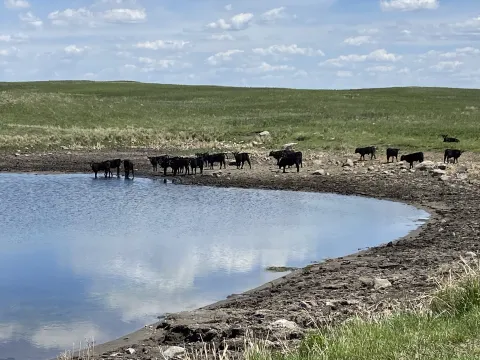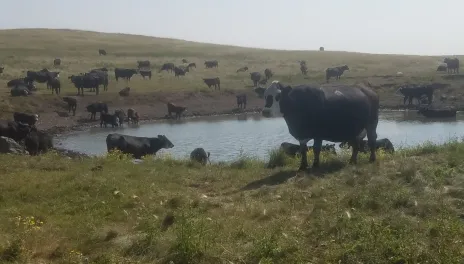Livestock water quality likely to be impacted by drought
Access to adequate, good-quality water will continue to be a challenge for ranchers in North Dakota this spring. Many ranchers in the region still depend on surface water sources, such as dugouts and stock dams, to provide water to grazing livestock.
Due to drought conditions and low spring runoff, many livestock water sources have either dried up or may be toxic to livestock.
When surface waters become low, the mineral component of the water becomes more concentrated because minerals do not evaporate with the water. Of particular concern are increased concentrations of total dissolved solids (TDS) and sulfates, which can be toxic to livestock. For most classes of grazing livestock, the TDS in the water should be less than 5,000 parts per million (ppm).

Sulfate is part of the TDS. The recommended concentration should be less than 500 ppm for calves and less than 1,000 ppm for adult cattle. High levels of sulfate can reduce copper availability in the diet. Elevated levels of sulfates may cause loose stool, whereas very high levels of sulfate can induce central nervous system problems.
Water quality screenings conducted by NDSU Extension agents last fall found many water sources to have potentially toxic levels of sulfates, especially in western North Dakota.
As you prepare for the upcoming grazing season, monitor water quality and evaluate alternative water options. We recommend a couple of tools to aid in monitoring water quality: a hand-held TDS meter and sulfate test strips. Both these tools are affordable and easy to use. If the screening indicates the TDS is greater than 4,500 ppm and/or sulfates are greater than 800 ppm, submit a sample to a lab for additional analysis.
If you have encountered water quality issues in the past, we encourage you to evaluate and consider developing an alternative water source. Installing a water development plan can help ensure that livestock have access to good-quality water throughout the grazing season and increase a ranch’s drought resilience.
For more information on livestock water quality contact your local NDSU Extension office or visit https://www.ndsu.edu/agriculture/ag-hub/ag-topics/livestock/water.
